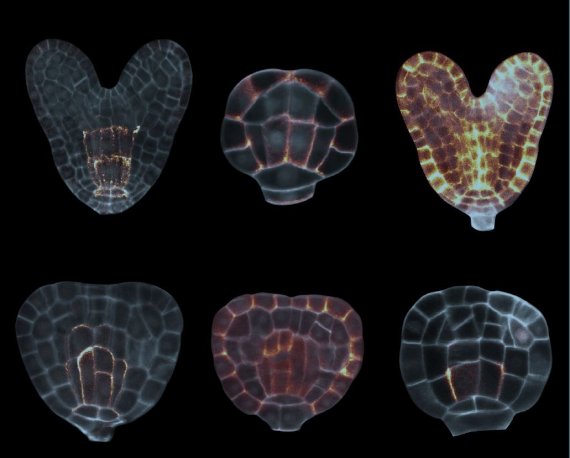All cells have a top, bottom, front, back, inside and outside with respect to the other cells around them. ‘To produce three-dimensional shapes, the cell has to know which direction to divide in,’ explains professor of Biochemistry Dolf Weijers. ‘If that goes wrong, the plant won’t produce leaves or its seeds won’t germinate.’
Scientists already knew how that process worked in animal cells but it was still a mystery in plants. Now researchers have discovered a new set of proteins that ‘tell’ the cell which direction is which. The proteins, which are mainly found in the corners of the cells, have been dubbed SOSEKI, which is Japanese for cornerstone. ‘The discovery marks a huge step forward in our understanding of how plant cells develop polarity,’ explains Weijers enthusiastically. The researchers’ findings were published in Nature Plants on 8 February.
The scientists also found numerous similarities between these polar proteins in plant cells and those in animal cells. Weijers: ‘That was unexpected. Plants and animals have a common single-celled ancestor but because directionality is mainly relevant in multicellular organisms, it was assumed that such mechanisms would have evolved independently in plants and animals.’ The discovery of the SOSEKI proteins shows that the compass is incredibly ancient and may even have been present in the single-celled ancestor.
The research is a major breakthrough but there are still plenty of mysteries. Weijers: ‘So far, we only know that these proteins form part of the compass but not whether they have any other important function. What we do see is that if the proteins are in a certain corner of the cell, they are able to control the direction of cell division.’

 The polar proteins can be seen in the corners and along the edges of the cells in this plant embryo. Photo: WUR Biochemistry.
The polar proteins can be seen in the corners and along the edges of the cells in this plant embryo. Photo: WUR Biochemistry.